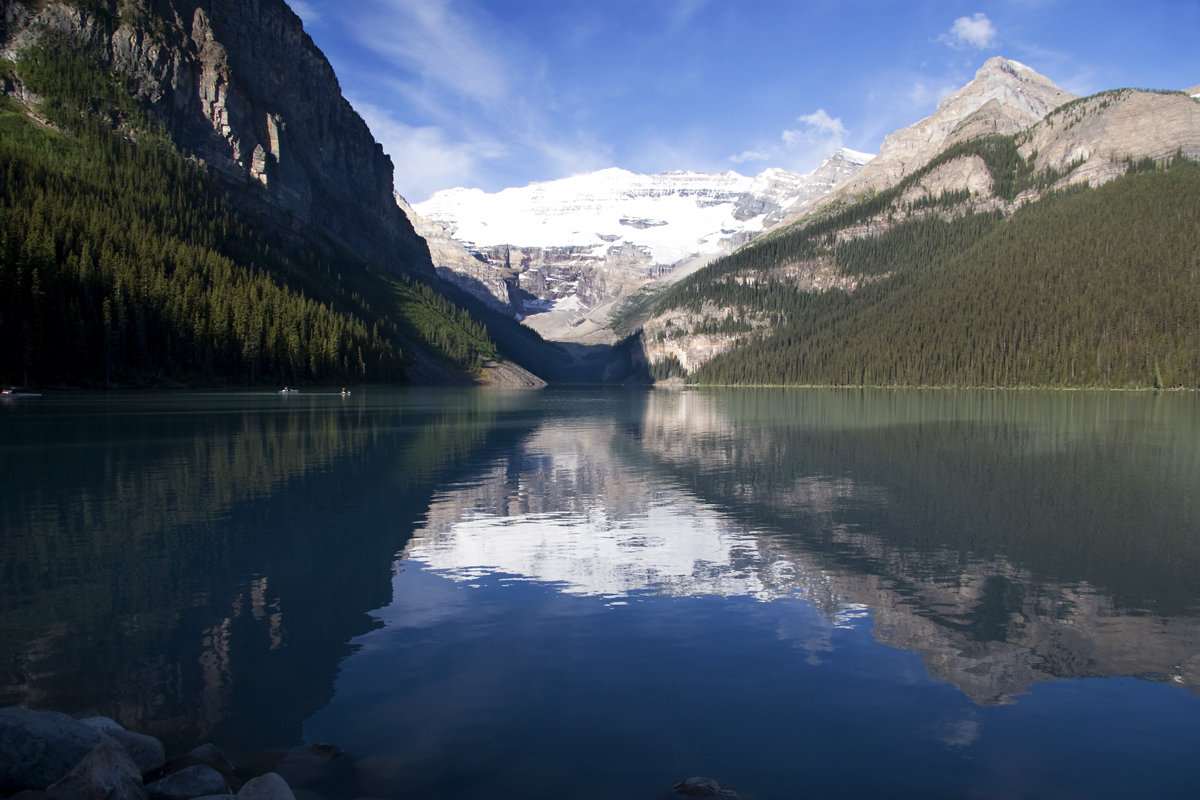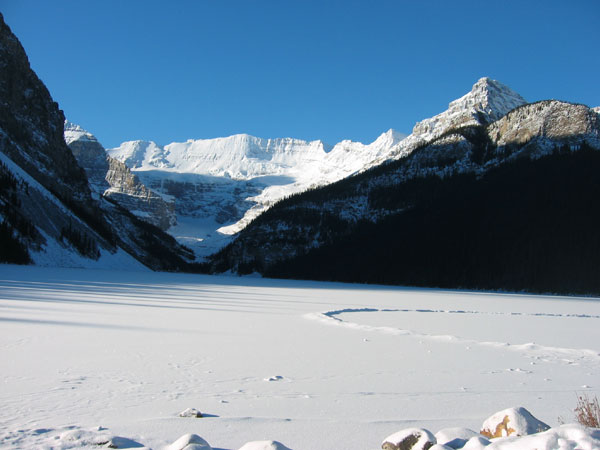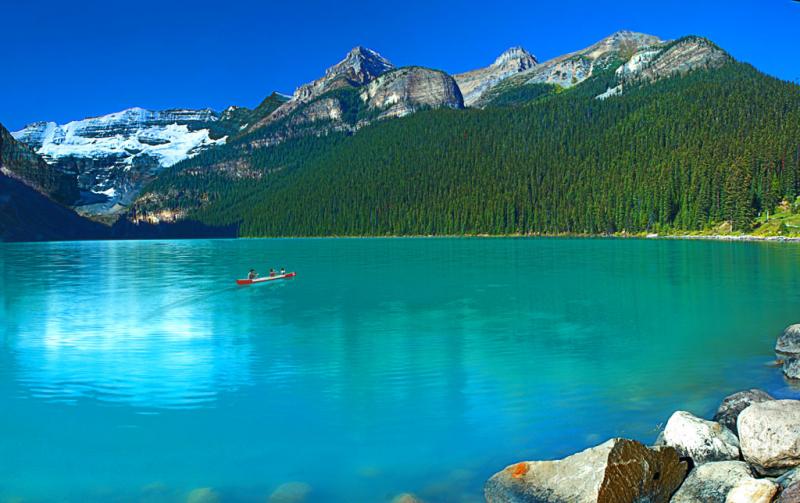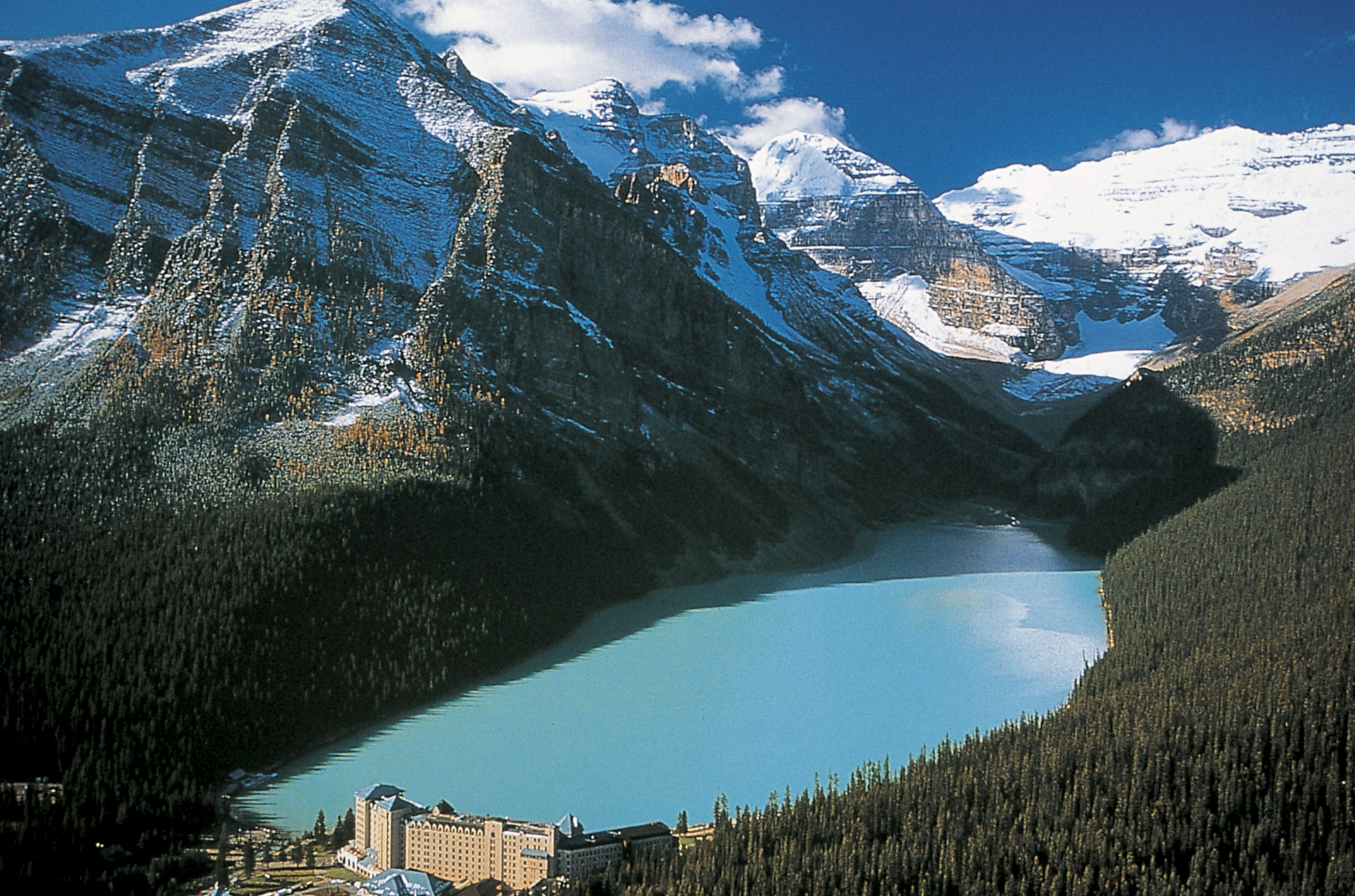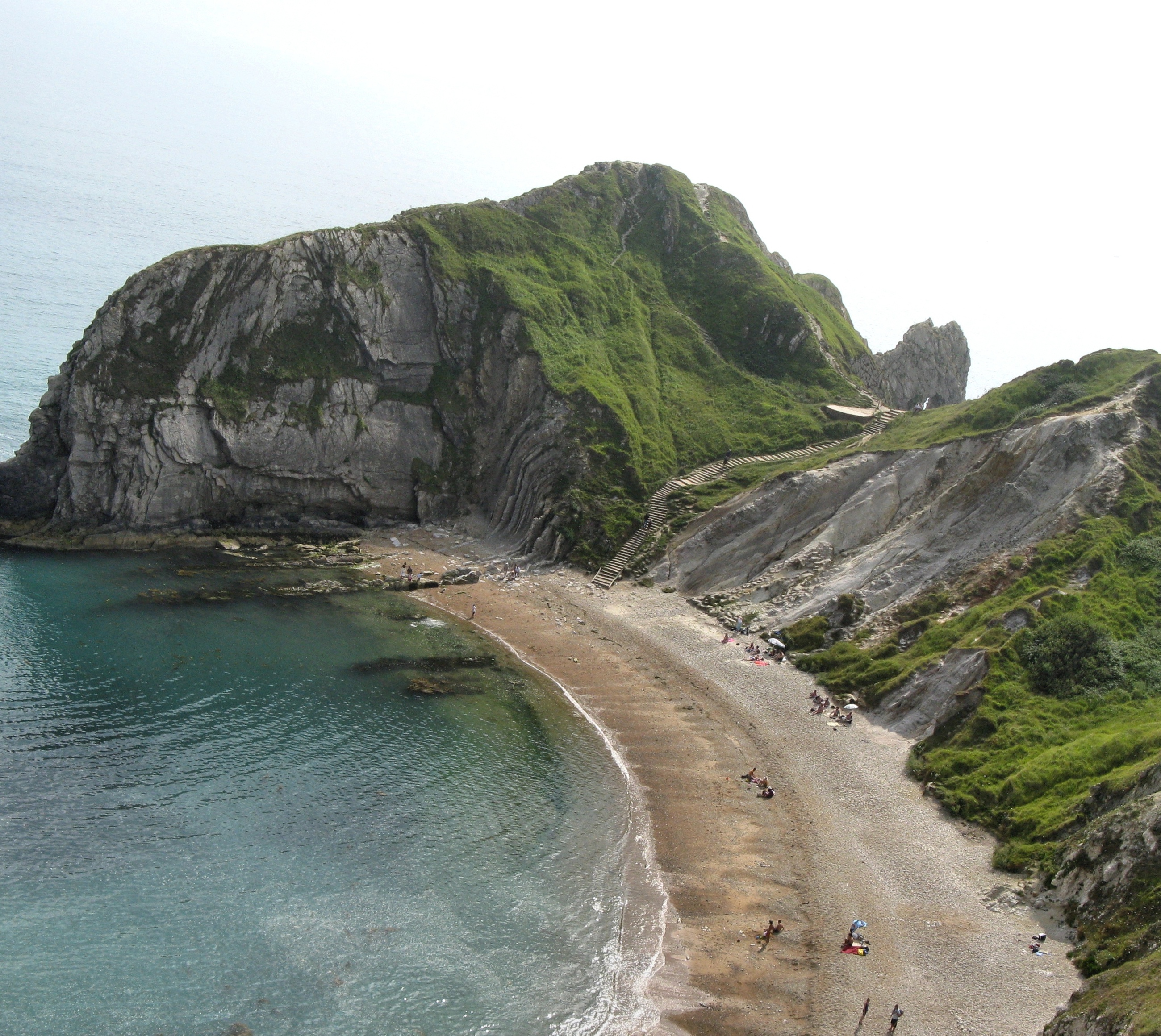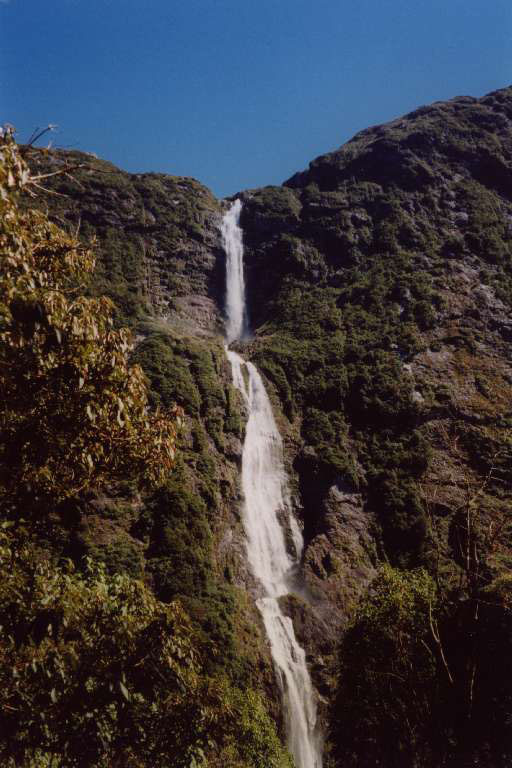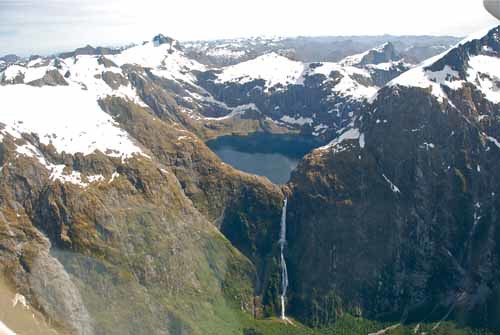A canyon or gorge is a deep ravine between cliffs often carved from the landscape by a river. Rivers have a natural tendency to reach a baseline elevation, which is the same elevation as the body of water it will eventually drain into. This forms a canyon. Most canyons were formed by a process of long-time erosion from a plateau level. The cliffs form because harder rock strata that are resistant to erosion and weathering remain exposed on the valley walls. Canyons are much more common in arid areas than in wet areas because physical weathering has a greater effect in arid zones. The wind and water from the river combine to erode and cut away less resistant materials such as shales. The freezing and expansion of water also serves to help form canyons. Water seeps into cracks between the rocks and freezes, pushing the rocks apart and eventually causing large chunks to break off the canyon walls. Canyon walls are often formed of resistant sandstones or granite. Submarine canyons form underwater, generally at the mouths of rivers. The word canyon is Spanish in origin. The word canyon is generally used in the United States, while the word gorge is more common in Europe and Oceania, though it is also used in some parts of the United States and Canada.
Canyons often form in areas of limestone rock. Limestone is to a certain extent soluble, so cave systems form in the rock. When these collapse a canyon is left, for example in the Mendip Hills in Somerset and Yorkshire Dales in Yorkshire, England.
A canyon may also refer to a rift between two mountain peaks such as those in ranges such as the Rocky Mountains, the Alps, the Himalayas or the Andes. Usually a river or stream and erosion carve out such splits between mountains. Examples of mountain type canyons are Provo Canyon in Utah or Yosemite National Park in California's Sierra Nevada. Canyons within mountains or gorges that only have an opening on one side are called box canyons. Slot canyons are very narrow canyons, often with smooth walls.




